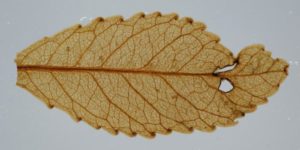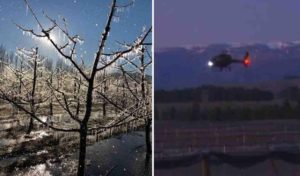by A. Wong & W. Yims, Jul 4, 2022 in The SaltbushClub
Summary
During late 2021, the Hunga Tonga-Hunga Ha’apai submarine volcano erupted creating a new island which erupted sub-aerially on 15th January, 2022 sending a plume 58 km above sea level penetrating the mesosphere. The study of observation records including satellite data has revealed warming of the ocean-surface layer followed by atmospheric cooling caused by the release of geothermal heat and volcanic materials entering the atmosphere respectively. Environmental factors influencing weather include the development of a relatively ‘short’ life-span South Pacific Blob; the transfer of large quantities of water vapour from the ocean into the atmosphere; the low-pressure condition on the ocean surface; the formation of clouds; the reduction of solar radiation caused by volcanic materials in the atmosphere; the strengthening of trade winds; the meandering of jet streams; the development of atmospheric rivers, the additional cooling effect of torrential rainfall, and, the switch to La Niña conditions. The record rainfall in eastern Australia and New Zealand and Tropical Cyclone Dovi occurring in February 2022 were both outcomes of atmospheric cooling following the sub-aerial eruption.
…
…
by Cap Allon, Dec 11, 2020 in Electroverse
A ‘white Christmas’ is an absurd prospect in New Zealand, but Southlanders could be forgiven for placing a bet or two this year after rare summer snow blanketed regions below 200m (650ft) Friday, December 11.
As originally reported by stuff.co.nz, temperatures plummeted overnight and snow, quite substantial in some parts, was falling in Northern Southland Friday morning–on State Highway 6 between Lumsden and Kingston, on Gorge Hill between Te Anau and Mossburn, and in hill country in the province.
There was also snow on the Remarkables mountain range in Queenstown, and flakes had settled in Arrowtown and in Garston. Photos of the snowfall were posted on the South Proud NZ Facebook Page with the caption: “Garston having a bit of a snow day today! So much for Summer huh?”
…
by P. Voosen, Sep 23, 2020 in AAAS Science
Many of the world’s most dangerous earthquake faults are a silent menace: They have not ruptured in more than a century. To gauge the hazard they pose to buildings and people, geologists cannot rely on the record of recent strikes, captured by seismometers. Instead, they must figure out how the faults behaved in the past by looking for clues in the rocks themselves, including slickenlines, scour marks along the exposed rock face of a fault that can indicate how much it slipped in past earthquakes.
…
…
Earthquakes don’t happen all at once. Rather, the slip between rocks begins at one spot on the face of the fault—the hypocenter—and travels along it, like a zipper being unzipped. As the rupture advances, the earthquake waves it generates pile up and intensify, like the siren of an approaching ambulance. Los Angeles lies at the northern terminus of the southern San Andreas fault, Ampuero notes. “If it breaks north, toward LA, that would be pretty bad.”
…
by EARTH INSTITUTE AT COLUMBIA UNIVERSITY, August 20, 2020 in WUWT
Scientists studying leaves from a 23-million-year-old forest have for the first time linked high levels of atmospheric carbon dioxide with increased plant growth, and the hot climate off the time. The finding adds to the understanding of how rising CO2 heats the earth, and how the dynamics of plant life could shift within decades, when CO2 levels may closely mirror those of the distant past.
Scientists retrieved the leaves from a unique onetime New Zealand lake bed that holds the remains of plants, algae, spiders, beetle, flies, fungi and other living things from a warm period known as the early Miocene. Scientists have long postulated that CO2 was high then, and some plants could harvest it more efficiently for photosynthesis. This is the first study to show that those things actually happened in tandem. The findings were published this week in the journal Climate of the Past.
“The amazing thing is that these leaves are basically mummified, so we have their original chemical compositions, and can see all their fine features under a microscope,” said lead author Tammo Reichgelt, an adjunct scientist at Columbia University’s Lamont-Doherty Earth Observatory and assistant professor of geosciences at the University of Connecticut. “Evidence has been building that CO2 was high then, but there have been paradoxes.”
…

IMAGE: A 23-MILLION-YEAR-OLD LEAF PRESERVED IN A ONETIME NEW ZEALAND LAKE BED, KEY TO PAST ATMOSPHERIC CONDITIONS. ONE CAN SEE VEINS, GLANDS ALONG THE TEETH, AND HOLES GNAWED BY INSECTS, WITH… view more CREDIT: JENNIFER BANNISTER/UNIVERSITY OF OTAGO
…
by Cap Allon, October 4, 2019 in Electroverse
New Zealand’s average temperature last month –for the country as a whole– was below the 1981-2010 September avg., Niwa has said in its Monthly Climate Summary.
An unusual warming of the atmosphere high above Antarctica –called a Sudden Stratospheric Warming event (SSW)– assisted in making last month the fourth coldest September in New Zealand this century.
There have only ever been two SSWs recorded in the Southern Hemisphere, previous to this years — one in September 2002 (major) and another in September 2010 (minor).
The 2002 SSW event resulted in New Zealand experiencing a significant cold outbreak in October while the 2010 event was associated with record rainfall during September.
…

…
by Cap Allon, Sep. 10, 2019 in Electroverse
Frost-fighting efforts have shifted into overdrive on New Zealand’s South Island as a brutal Antarctic blast rips through the region — the first blast of many, according to NIWA forecasts.
Otago, a southeastern region of NZ’s South Island, is home to the buds of millions of dollars worth of stone-fruit. Forecasters say temperatures in central Otago plummeted to a bruising -5C (23F) on Tues morning, Sept 10.
Sprinklers were turned-on so as to deliberately encase the tender fruit in a protective clear-ice casing — an age-old method of frost-fighting. While helicopters and wind machines were also drafted-in to blow warm air over the orchards.
“It’s all hands on deck,” said Tim Jones, chief executive of 45 South Orchard and Packhouse in Cromwell, who expects the cold to stick around for at least another month.
“NIWA has got some news out there that this could be a challenging spring,” Jones added.
New Zealand has a higher-than-usual risk of sharp cold snaps and unsettled weather during the first half of the season, according to the National Institute of Water and Atmospheric Research (NIWA).
A rare sudden stratospheric warming (SSW) event is occurring 30-50 km above Antarctica which is already leading to unusual and extreme weather in parts of the Southern Hemisphere.

…
by Cross et al., November 29, 2018 in CO2Science
Paper Reviewed
Cross, E.L., Harper, E.M. and Peck, L.S. 2018. A 120-year record of resilience to environmental change in brachiopods. Global Change Biology 24: 2262-2271.
…
In light of all their findings, Cross et al. conclude that “these rhynchonelliform brachiopods have therefore been unaffected in their abilities to construct and maintain their extensive skeletons by the change in ocean acidity and temperature over the last 120 years.” And this is a noteworthy conclusion, given that C. inconspicua is one of the most calcium-carbonate-dependent species globally, and is therefore presumed to be highly susceptible to ocean acidification. It would thus appear that proper incorporation of species’ adaptation and/or acclimation potentials is essential if scientists are to get predictions of the impacts of ocean acidification on marine life correct.
by Geological Society of America, May 3, 2018 in ScienceDaily
-
Over the last 5000 years, Mount Taranaki volcano, located in the westernmost part of New Zealand’s North Island, produced at least 16 Plinian-scale explosive eruptions, the latest at AD 1655. These eruptions had magnitudes of 4 to 5, eruptive styles, and contrasting basaltic to andesitic chemical compositions comparable to the eruptions of Etna, 122 BC; Vesuvius, AD79; Tarawera, 1886; Pelée, 1902; Colima, 1910; Mount Saint Helens, 1980; Merapi, 2010; and Calbuco, 2015.
by Rick Wilkinson, April 12, 2018 in Oil&GasJournal
The New Zealand government has made the surprise announcement that it will not grant any new permits for offshore oil and gas exploration.
The Labor government of Prime Minister Jacinda Ardern said the move would not be retrospective. The country’s 22 existing offshore exploration permits along with any discoveries made in them could still lead to the granting of production licenses of up to 40 years duration.
La géologie, une science plus que passionnante … et diverse



